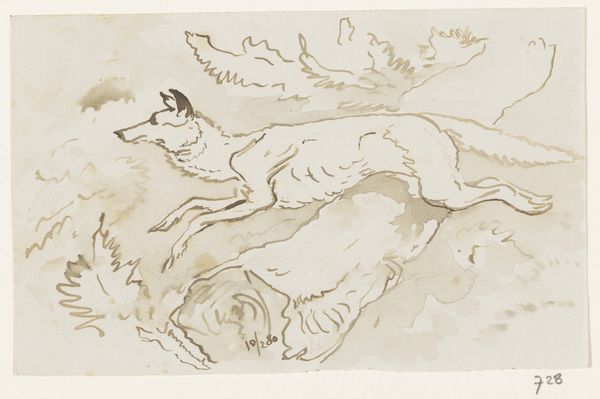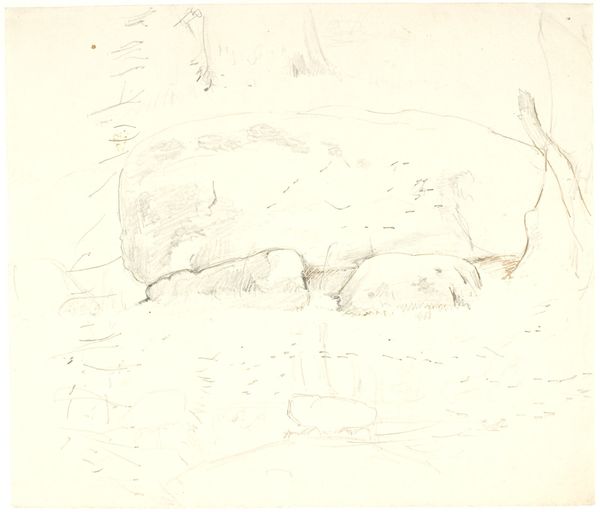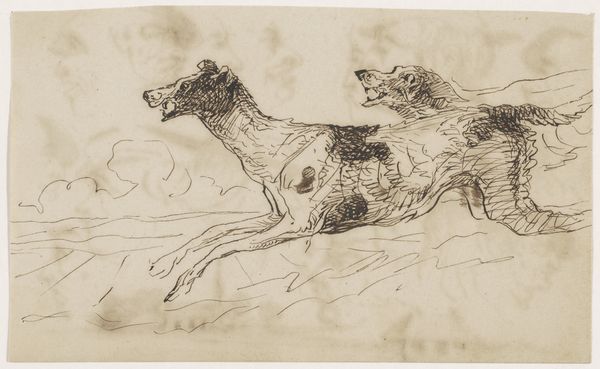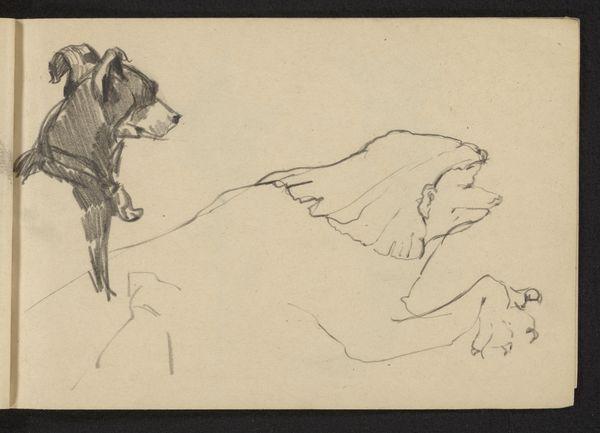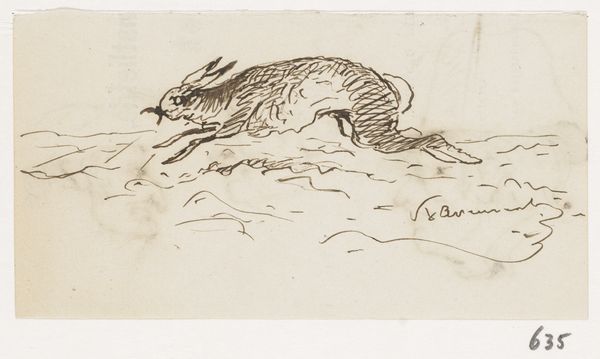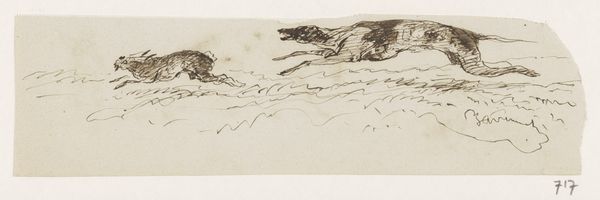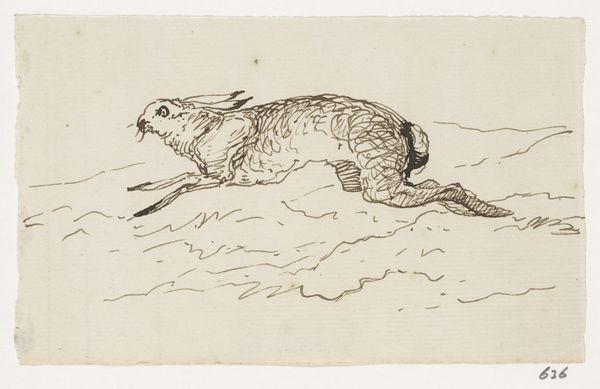
drawing, paper, ink
#
drawing
#
animal
#
landscape
#
paper
#
ink
#
realism
Dimensions: height 100 mm, width 152 mm
Copyright: Rijks Museum: Open Domain
Curator: Let's take a look at this fascinating drawing, simply titled "Haas," or "Hare" in Dutch, believed to be created by Johannes Tavenraat sometime between 1840 and 1880. Editor: It strikes me immediately as an image of fleeting, frantic energy. The hare is caught mid-leap, and the light washes and wispy lines make the animal almost evaporate before our eyes. What are your initial thoughts on it? Curator: I see the image as reflective of its historical moment. The 19th century witnessed a growing fascination with the natural world, but also increasing industrialization. This hare becomes a potent symbol for the ever-narrowing space afforded to wildlife, representing both a realistic portrayal of an animal and its simultaneous symbolic endangerment. Editor: Yes, and consider how the hare itself functions as a traditional symbol. Across cultures, it has been associated with speed, fertility, but also timidity and vulnerability. Tavenraat seems to be playing with these layered meanings. Notice how the almost ephemeral quality of the ink contributes to the animal’s perceived fragility. It’s running, but will it escape? Curator: It’s important, too, to remember Tavenraat's socio-political landscape. He lived in a time when scientific racism was rampant, impacting our understanding of "natural" hierarchies. This image, although seemingly benign, may subtly reinforce human dominance over nature, as a capture of something wild. Or perhaps Tavenraat hoped for something else entirely. Editor: I think what makes this piece so resonant, though, is that it remains ambiguous. The hare's symbolic weight is carried lightly; it's suggested rather than dictated. And the choice of ink drawing contributes to a sense of immediacy, of catching a glimpse. It suggests we can only get fleeting looks at a moment of pure freedom, so to speak. Curator: Absolutely, and to conclude, this artwork encourages us to consider not just what we see, but the systems of power that shape our perception. Editor: Indeed. It offers a visual moment charged with a layered cultural understanding and subtle artistic beauty.
Comments
No comments
Be the first to comment and join the conversation on the ultimate creative platform.

